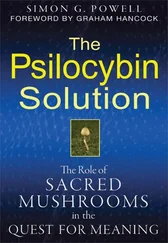“Of course, sir. This is our language enhancement lab.”
“Language enhancement? None of them are speaking.”
Elias had turned away from the view to look at Bonillas as he spoke, and noticed a slight grin curl the corners of her mouth in reaction to his comment.
“There are many methods of communication. Speaking is only one of them. We are attempting to utilize the human mind’s tendency to adapt as our primary tool for the development of alternate communication skills.”
“You’re too modest, Doctor Bonillas,” Kreitzmann broke in. “I would hardly describe the success you’ve had here as an attempt.”
“Thank you, sir.”
“I’m afraid I still don’t understand.”
“It’s really quite simple,” she explained. “Years of study and research, which preceded our work, established that if the body is deprived of one sense…sight, for example…the other senses are enhanced, to varying degrees, of course.”
“This is true.”
“Doctor Kreitzmann theorized that if that occurred with senses, why not with abilities?”
Elias felt a slight tensing of his neck muscles as he figured out the direction of this work. He struggled to maintain his composure, as well as his cover of a disenchanted scientist who held mankind in contempt. “Fascinating.” His single-word comment sounded sincere to his ears.
Kreitzmann once again broke in, “As I’m sure you’ve already discerned, this path of study fits in quite nicely with my overall thesis for the human race.”
“I confess that I am not all that familiar with your underlying principle.”
The man puffed up, obviously appreciative of the opportunity to expound. “I have always believed that so much of what we are capable of doing — in fact, so much of what we are — is conditioned by the environment.”
“The Earth?”
The scientist smirked. “No, by ‘the environment,’ I mean the society, the human beings around us.”
“I’m not certain that I understand.”
Gesturing toward the group on the other side of the glass, Kreitzmann explained, “This is a perfect example. I have no doubt that our physiology provides for several methods of communication at the point we are born. It is only because we are immediately surrounded by babbling fools, people who exclusively utilize speech as the sole means to communicate, that we opt for the path of least resistance and succumb to it ourselves.”
“Of what other forms of communication do you believe we are capable?”
Triumphantly, Kreitzmann proclaimed, “Telepathy, for one.”
“You’re not serious?”
“Oh, but I am, Patrick. Do you realize how many times nonverbal, and by that I mean psychic, communication has been documented in the laboratory? The incidence of successful communication far exceeds the mathematical probabilities. And yet, the scientific community continues to ridicule the study of the phenomenon, casting any researcher who dares to follow this path as fringe and a nutcase!”
Elias said nothing, waiting.
“Certainly, you are familiar with the work done in the past demonstrating the criticality of exposure to certain stimuli at early ages.”
“I am. The one which comes to mind is the study of musical ability.”
“An excellent example. If a child is exposed to music and encouraged to play instruments at a very early age, his or her ability to truly master the instruments increases dramatically. And the lifelong ability to learn new instruments is substantially enhanced, as well.”
“True.”
“And the converse is true. If a child matures without the exposure to music, the part of the brain which would be dedicated to this skill is assigned to other tasks and skills.”
“I’ve read that.”
“What we are doing here is developing and encouraging the skill to communicate psychically.”
Forcing an expression of neutral interest onto his face, Elias asked, “How are you doing that?”
The smug grin returning to his face, Kreitzmann explained, “We are utilizing the same learning technique for this field that we have perfected in several others. We create a perfect environment for fostering a skill and immerse the child in it from birth.”
It took all of Elias’ will power to stop himself from strangling the madman on the spot. Instead, maintaining his cover, he painted a smile across his face and remarked, “Immersion from birth? Amazing. And the results?”
“I’ll let Dr. Bonillas answer that.”
The woman, who had been standing silently beside them through the dialogue, began to speak. “Our progress has been slow, of course, due to the pace at which human children grow and mature.”
“Of course.”
“But we are obtaining a rather rapid increase in skill levels now that we are in Phase Two.”
“Phase Two?”
Elias was astounded by the detachment displayed by Bonillas as she continued. “Phase One, where we began, was limited by the fact that we were forced to utilize a virtual reality. Although this formula has performed well in other arenas of our research, the concept of telepathy did not lend itself as well to the modality, due to the lack of definitive feedback.”
“I’m not really up to speed on the virtual reality you mentioned….”
“Of course,” she interrupted. “I’m sorry. We created a room where the infants were first raised.”
“This room?” Elias asked, pointing at the area beyond the glass.
“No. This is the Phase Two room. In Phase One, the virtual reality which surrounded the newborns contained no spoken language.”
“None? So the infants were tended to by adults who were not allowed to speak?”
“Yes, in part. They were not only barred from speaking, they were forbidden to respond to any verbal communication.”
“Including crying?”
“Including crying.”
“Weren’t some reactions involuntary?”
“Very perceptive,” Kreitzmann noted. “We noticed that the caregivers were reacting to verbal stimuli against their conscious will, so we corrected this problem by using only caregivers who were completely deaf.”
This conversation was becoming more of a test of Elias’ self-control than he had anticipated. Unable to say anything at the moment, he merely nodded.
Bonillas picked up where Kreitzmann had left off. “What we were able to accomplish in Phase One was an intensification of the urge within the infants to communicate. We then exploited that urge with an example which, quite frankly, was a wild guess as to how telepathy worked.”
“Now, Doctor Bonillas, I think I would call it an educated guess.”
Glancing over at her boss, she corrected herself, “An educated guess as to how telepathy worked. As it turned out, we were closer than we thought.”
Elias found his voice. “How so?”
“We had decided, after reviewing the available research, as well as the anecdotal evidence in the record, that telepathic communication is symbolic, rather than communication which possesses a vocabulary or grammatical rules.”
“Graphic or pictographic?”
“Graphic,” she replied.
“So,” Elias asked, “if little Bobby wanted to convey that he was hungry, he visualized eating.”
“Exactly. And, from what we can tell, very specific imagery. He would not only visualize eating, but would visualize what he wanted — an apple, for example. And not just a generic apple, but a very precise image of a green apple.”
“Interesting.”
“But Phase One was horribly frustrating. We were shooting in the dark, to coin a phrase. We had no idea if we were making any progress.”
“Why is that?” Elias inquired dutifully.
“We weren’t in the loop. We were observing the subjects as they appeared to develop the skills, but we had no way of monitoring, or listening in, to see if they really were.”
Читать дальше












